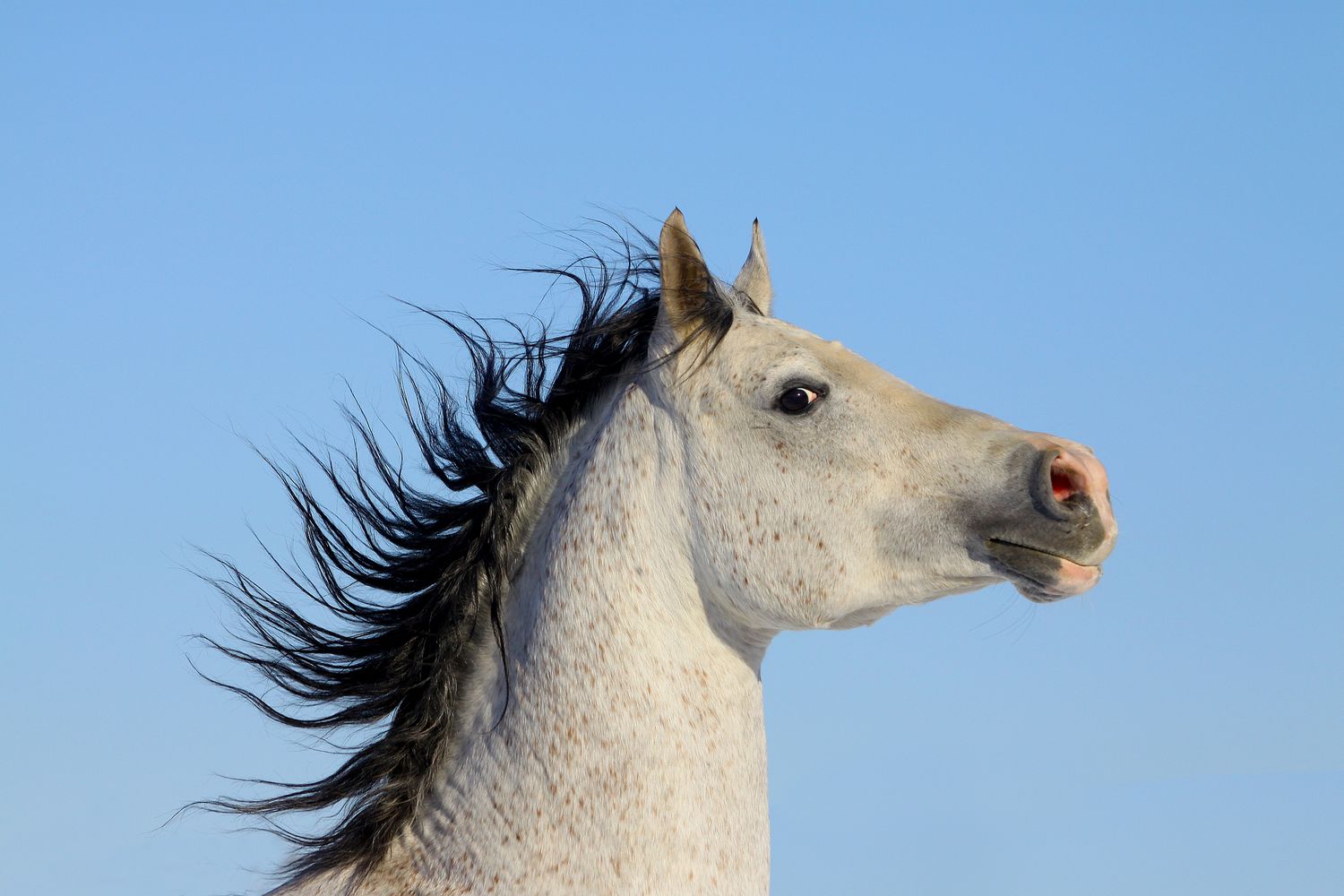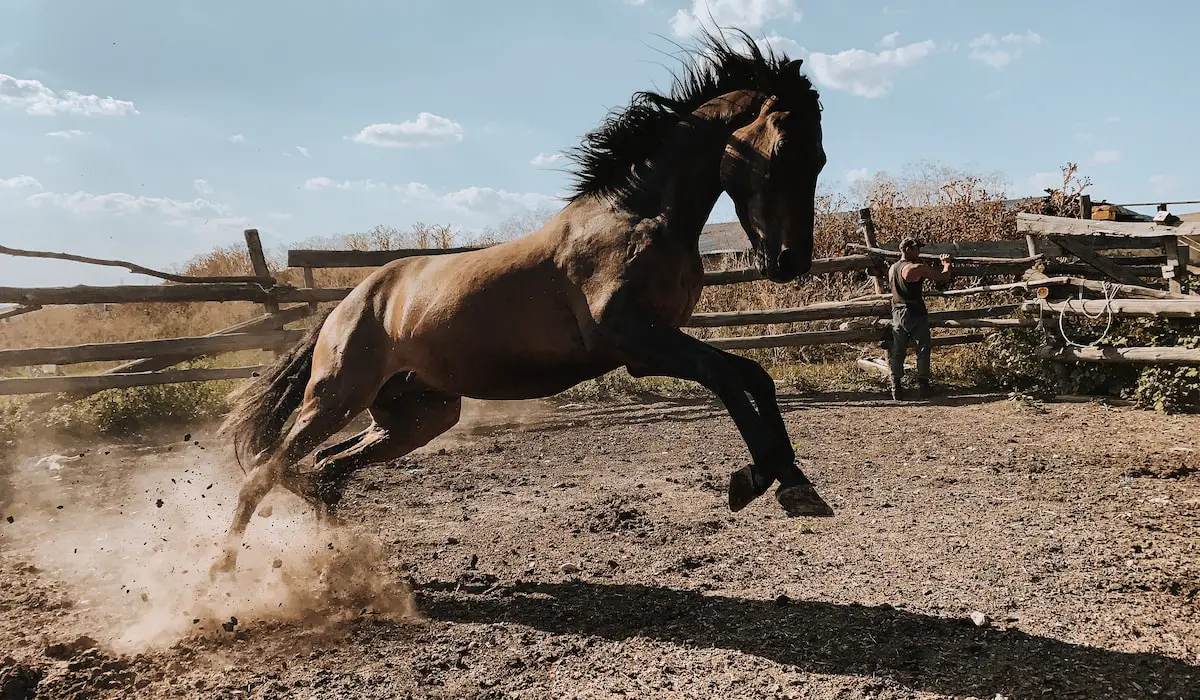Why Do Jockeys Hit Horses: A Deep Dive into the Practice
Behind the thunderous hooves and the roar of the crowd, horse racing is a sport steeped in tradition and controversy, particularly when it comes to the use of whips. Understanding why jockeys hit horses is a complex issue that spans safety, performance, and animal welfare.
In the realm of horse racing,
- jockeys use whips for encouragement to activate the horse or trigger a gear change in speed
- and for the safety of both the horse and rider, such as when jumping an obstacle.
Industry insiders maintain that whip use is essential for safety, but this stance is met with a growing chorus of opposition citing ethical and welfare concerns.
Exploring the Role of Whips in Horse Racing Dynamics

Whips have long held a symbolic and functional role in the world of horse racing. While their presence on the track is rooted in tradition, their practical applications have evolved, leading to a nuanced discussion about their place in contemporary racing culture. The industry faces the challenge of aligning time-honored customs with the rising expectations of animal welfare and sportsmanship.
The Evolution of Whips in Racing Culture
The association between whips and horse racing dates back to the sport’s inception, symbolizing the control and command of riders over their mounts. However, the focus on their symbolic importance is shifting as the sport progresses, prompting a reevaluation of their necessity in the context of modern racing.
- The transformation of whip significance in racing
- Reassessing the role of whips amidst evolving standards
Communication and Guidance: The Modern Use of Whips
Today, whips serve as a nuanced means of communication between jockey and horse, facilitating nuanced directional commands and speed adjustments. This silent dialogue is essential during the intense atmosphere of a race where audible cues are impractical.
- Interpreting the subtle signals conveyed by whip use
- Adapting jockey-horse communication for the modern track
Evaluating the Influence of Whips on Racing Integrity
The justification for using whips for enhanced racing outcomes is under scrutiny, with new findings indicating that their effect on race results may be minimal. This highlights the need to reassess the balance between conventional practices and the modern principles of fair competition.
- Investigating the true impact of whips on race performance
- The intersection of ethics and competitive practices in racing
Innovations in Whip Design for Horse Welfare
In response to growing welfare concerns, the industry has innovated the whip’s design, focusing on reducing discomfort while preserving the tool’s effectiveness for rider communication. These developments reflect a commitment to maintaining racing traditions alongside a dedication to ethical reforms.
| Features of Modern Whips | Functionality | Welfare Benefits |
|---|---|---|
| Enhanced Padding | Mitigates impact on the horse | Lessens potential harm and stress |
| Improved Flexibility | Enables a gentler contact | Reduces force of strikes |
| Streamlined Composition | Facilitates ease of use | Improves horse comfort and jockey handling |
The Future of Racing: A World Without Whips?
The possibility of eliminating whips from horse racing is gaining attention, prompting investigations into how races might proceed without them. Emerging studies on whip-free environments offer insights into how horses adapt to new cues and how the integrity of the sport can be preserved.
- Studying the dynamics of racing in the absence of whips
- Exploring alternative methods of horse-rider communication
- Examining the implications for competitive balance and audience engagement
As the sport of horse racing continues to address the multifaceted aspects of equine behavior and welfare, the debate over whip usage persists. By reflecting on historical practices, examining their current function, and considering new research, the industry can progress in a manner that respects both tradition and ethical responsibility.
Enhancing Understanding of Holistic Equine Care in Racing

A broader discussion on the well-being of horses within the competitive racing scene includes a careful consideration of the holistic experiences horses undergo. This encompasses not just the race day but also their daily routines, training, and handling. Addressing the complete range of stressors impacting horses is crucial for their well-being and could potentially enhance their performance through the adoption of more positive training methods and environments.
Addressing Equine Health Concerns Beyond Stress
It is widely recognized that stress can manifest in physical ailments, which in the case of horses, can range from ulcers to compromised immune systems and a heightened risk of injury. A proactive approach to recognizing and managing these health issues is vital for safeguarding equine well-being. This proactive management involves collaboration among all stakeholders in the horse racing community.
Emphasizing Enrichment in Equine Care
Alongside physical health, the mental and emotional states of horses are of paramount importance. Horses, being inherently social creatures, benefit from environments that provide mental stimulation and opportunities for interaction with peers. Facilities focused on such enrichment can positively impact a horse’s temperament, resulting in better cooperation during training and racing.
Improving Pain Detection in Horses
Recognizing pain in horses is complex due to their instinct to mask discomfort. This necessitates a skilled approach from trainers and veterinarians in identifying and interpreting the subtler signs of pain. The development of pain assessment tools helps establish a more objective understanding of equine discomfort, leading to improved pain management practices.
Promoting Positive Training Techniques
There is an increasing emphasis on training programs that resonate with the natural behaviors and learning patterns of horses. These methods prioritize positive reinforcement, which can strengthen the horse-trainer bond and may lead to superior performance while also reducing the risk of injuries.
The evolution of equine behavior and welfare knowledge is fundamental for the future of horse racing. As research continues to support more humane approaches to horse training and care, the industry is in a position to significantly enhance the quality of life for racehorses. With ongoing education and a strong ethical framework, we can protect the integrity of the sport and the welfare of the horses at its heart.
Whip Regulations and Their Future in Horse Racing

As the equine sporting community grapples with ethical considerations, focus on whip rules in racing has intensified. Regulatory bodies worldwide strive to create a fair balance between the sport’s heritage and modern standards of horse care. These rules vary internationally, which presents a complex tapestry of standards that mirrors the diverse views on horse management and fairness within the sport. Successful regulation is dependent on uniform enforcement and the commitment of all involved to abide by the established guidelines.
Global Approaches to Whip Regulation
- Understanding international regulatory variations
- Analyzing the role of cultural perspectives in rule enforcement
Challenges in Regulating Whip Use
The adherence to whip rules in racing can be problematic, with inconsistencies in enforcement among jurisdictions. Authorities are considering a range of strategies to enhance regulatory effectiveness. Potential solutions include improved race monitoring, clear penalty systems, and educational efforts directed at jockeys. Technological advancements may also provide innovative means for tracking and ensuring compliance with whip regulations.
Enhancing Regulatory Effectiveness
- Utilizing technology to oversee regulations
- Creating explicit penalty frameworks
- Conducting educational programs for racing professionals
Consequences of Diverse Whip Regulations
International disparities in whip rules in racing can lead to confusion and uneven competition when horses and jockeys race abroad. These differences challenge efforts to establish global welfare standards. Ongoing industry discussions aim to reduce these regulatory discrepancies and promote a unified international stance on whip use.
Working Towards International Consensus
- Encouraging global discussions on whip regulation
- Evaluating the possibility of universal guidelines
Influence of Advocacy on Whip Policy
The voices of the public and advocacy organizations are increasingly shaping the discourse on whip rules in racing. As societal awareness of animal welfare issues strengthens, these groups motivate racing authorities to reconsider and revise their regulations. The industry must adapt to these societal trends to maintain public trust and the sport’s reputation.
Industry Adaptation to Societal Trends
- Collaborating with animal welfare advocates
- Incorporating public and fan perspectives
- Updating regulations to meet ethical standards
Progressive Trends in Whip Policy
The ongoing discussions regarding whip rules in racing may lead to policy modifications that further address the ethical treatment of horses. With the landscape of regulations continually evolving, authorities must stay flexible and proactive, considering current research and societal views as they shape future guidelines.
Staying Ahead of Regulatory Evolution
- Keeping abreast of research advancements
- Being prepared for updates in policies
- Adapting regulations to contemporary welfare standards
Revisiting Ethical Practices in Horse Racing

Advancing Equine Welfare in Competitive Racing
With the increasing focus on animal rights in sports, horse racing faces scrutiny regarding its alignment with modern principles of humane treatment. The respect and consideration due to equine athletes parallel those afforded to human participants, demanding a reexamination of practices, notably the contentious issue of whip use, to safeguard their welfare.
Reform in Racing: Ethical Dilemmas
The conversation on the controversy over horse whipping raises critical ethical considerations that necessitate a fresh examination of racing customs. Are we motivating or punishing these animals? The discussion encompasses the psychological and physical well-being of horses, influencing potential policy reforms and driving a progressive approach to the sport.
Respecting the Independence of Racehorses
The evolving recognition of animal autonomy in sports challenges conventional notions and calls for a reassessment of the human influence exerted over racehorses. This emerging discourse underscores the importance of honoring the natural behaviors and preferences of horses as part of ethical racing practices.
- Valuing the intrinsic worth of animal autonomy
- Evaluating ethical considerations of control in racing
Understanding the Mental Impact of Racing Practices
While the focus has often been on the physical implications of whipping, the mental health of horses is equally critical. Advanced studies on equine cognition and emotionality highlight the necessity of revising training and racing methods that could adversely affect their psychological state.
- Investigating cognitive and emotional reactions in equines
- Addressing the potential long-lasting psychological impact
Role of Ethics Committees in Upholding Standards
The establishment of ethics committees is a strategic response to the sport’s ethical challenges, focusing on upholding the highest standards, including the humane treatment of horses. They are instrumental in steering the industry towards ethical integrity and fostering constructive discussions for reform.
Advocating for the Rights of Horses
While human participants often dominate racing discourse, the rights of equine athletes are paramount. Their entitlement to rest, socialization, and freedom from undue force is integral to ethical racing. The industry’s approach to these rights reflects its commitment to animal welfare and the sport’s sustainability.
- Acknowledging the sentience of horses
- Advocating for the well-being of equine athletes in and out of competition
Enhancing Transparency in Horse Care
Openness regarding equine welfare is essential for upholding the sport’s ethical integrity and securing public confidence. Increased transparency in disclosing welfare practices, veterinary provisions, and training procedures is essential for the sport’s integrity and accountability.
- Championing the disclosure of welfare measures
- Strengthening trust through candidness in horse management
By prioritizing the rights and welfare of equine athletes, horse racing can evolve to respect the sport’s heritage while adhering to contemporary standards of animal care and ethical conduct.
Advancing Horsemanship: The Power of Positive Reinforcement

The advancement of equestrian practices has led to a greater focus on humane and ethical horse training methods. By prioritizing rewards over punishment, these methods align with the latest animal welfare standards and challenge traditional training practices that included whips. Through positive reinforcement, trainers are able to establish a trust-based relationship with their horses, which translates to enhanced performance and a cooperative spirit in competitive settings.
Cultivating Trust with Positive Techniques
Trainers now place a premium on positive reinforcement, which involves rewarding horses for desirable behavior. This positive approach is characterized by:
- Offering vocal praise and encouragement
- Giving affectionate pats and touches
- Providing treats as a form of reward
This method of training encourages horses to form an association between obedience and positive experiences, fostering a more eager and willing attitude during the learning process.
Enhancing Training with Clicker Techniques
Clicker training is a specialized positive reinforcement method that uses a click sound to mark the correct behavior, followed promptly by a reward. This technique is beneficial for:
- Signaling to horses the precise moment they’ve done something right
- Minimizing confusion and accelerating the learning process
- Creating a consistent way for trainers and horses to communicate
Clicker training’s exactness is particularly useful for refining intricate behaviors, offering a humane alternative to traditional training methods for racetrack preparation.
Embracing Liberty Training for Willing Engagement
Liberty training fosters a cooperative dynamic between horse and trainer without the use of restraints. This approach is rooted in:
- Interpreting and responding to equine body language
- Guiding horses with trainer body language
- Forming a shared language for clear directives and reactions
Liberty training emphasizes mutual respect and the horse’s autonomy, encouraging voluntary participation in training activities.
Desensitization Techniques for a Calm Demeanor
Desensitization helps horses calmly face stimuli that may otherwise provoke anxiety. The technique includes:
- Slowly introducing elements of the racing environment
- Consistent exposure to the sounds and visuals associated with racing
- Utilizing positive reinforcement to reward calm behavior
Trainers using desensitization methods enable horses to maintain composure amidst the excitement of racing, diminishing the traditional reliance on whips for behavior management.
Non-Whipping Methods for Behavior Influence
The exploration of non-whipping training practices has led to an array of aids and techniques that focus on horse comfort and minimal stress. These include:
- Groundwork to bolster communication and mutual respect
- Exposing horses to race-like scenarios in a controlled manner
- Employing tools such as flags or dressage whips to guide rather than strike
Adoption of these innovative methods represents a shift towards more compassionate training within the horse racing industry, striving to balance athletic excellence with the well-being of the horse.
Progress in Jockey Gear: Fostering Equine and Rider Safety

The evolution of jockey equipment is a testament to the ongoing commitment to enhance protection and efficiency in horse racing. Beyond the discussions surrounding whips, a jockey’s toolkit encompasses a range of attire and gadgets aimed at safeguarding both the rider and the horse. The industry’s focus on integrating technology and innovative design into gear is paving the way for a future where every circuit is marked by the highest safety standards and respect for equine partners.
Revolutionizing Head Protection for Jockeys
Significant advancements have been made in headgear for jockeys, transitioning from simple protective caps to cutting-edge helmets that:
- Utilize composite materials for unmatched impact absorption
- Feature built-in ventilation to ensure comfort during races
- Are fitted with enhanced visors and goggles for optimal visibility in all conditions
These improvements in headgear are crucial for injury prevention and help jockeys stay concentrated and undistracted during the heat of competition.
Next-Generation Torso Armor: The Evolution of Safety Vests
Safety vests have undergone a radical transformation, with the latest iterations being:
- Fabricated from materials like Kevlar for a lightweight yet protective barrier
- Engineered to disperse shock and mitigate injuries from falls
- Contoured to allow for agility and precise movements
These vests act as a second skin, preserving the jockey’s well-being as they maneuver through the perils of racing.
Enhanced Footgear and Stirrups: Ensuring Secure Connection
Footwear is pivotal in establishing a secure connection with the horse, and modern jockey boots have been redesigned to:
- Feature anti-slip soles for steadfast stirrup placement
- Incorporate materials that alleviate fatigue from extended wear
- Include protective toe caps to guard against injury
Stirrups have simultaneously been refined, becoming more robust and supportive of the jockey’s stance, which is essential for maintaining balance and facilitating safe dismounts.
Racewear for Enhanced Grip and Streamlining
Every aspect of a jockey’s attire, including gloves and racing silks, is designed to optimize performance. Gloves have been upgraded to:
- Provide superior rein traction with high-grip fabrics
- Endure all types of weather while maintaining dexterity
- Offer comfort to prevent hand fatigue and skin damage
Racing silks have similarly been refined with:
- Materials that minimize drag and are breathable
- Technologies that wick away moisture and maintain rider comfort
- Dyes that are resilient, ensuring the longevity of traditional racing hues
These garments play a critical role in a jockey’s ability to perform with agility and precision.
The Advent of Technology in Racing Gear
Embedding technology in jockey equipment has brought about a new era in race safety and strategy. Technological innovations now featured in gear include:
- Helmet-mounted GPS units for monitoring position and velocity
- Wearable vests that gauge vital stats and alert to distress
- Intelligent stirrups fitted with sensors to finesse riding form
These advancements yield vital analytics, aiding in the enhancement of racing tactics while prioritizing the welfare of both jockey and horse.
The forward momentum of horse racing is mirrored in the sophistication of the accompanying gear, reflecting a deep-seated resolve to perpetually advance safety and uphold the integrity of competition. The progression of jockey equipment is a clear indication of the industry’s reverence for the athletes, both human and equine, who bring the sport to life.
If you’re curious about the behaviors and treatment of horses, especially those in competitive equestrian sports, you might find our articles on related topics quite enlightening. Discover the reasons behind certain equine behaviors by exploring why horses buck in our detailed article here. Additionally, learn about the peculiar habit of weaving in horses and what it signifies by clicking here. Lastly, understand the reasons why many racehorses are gelded and the impact it has on them by visiting our in-depth discussion here. Each of these behaviors has a significant effect on how jockeys interact with their equine partners on and off the track.
Advancing Ethical Horse Racing Practices
Reforming Horse Racing: Welfare-Friendly Practices
The call for reform in horse racing is louder than ever. Advocates for ethical horse racing practices are pushing the industry towards a more humane and welfare-centric approach, with the aim of safeguarding the dignity and well-being of racehorses.
Public Perception and the Future of Ethical Horse Racing
The future of horse racing hinges on its ability to align with public sentiment regarding animal welfare. As concerns about the ethical treatment of animals grow, the industry must adapt to maintain its social license to operate. The path forward will likely involve a reevaluation of traditional practices, including the use of whips, as stakeholders seek to ensure the sport’s sustainability and integrity.
In conclusion, the use of whips in horse racing is a multifaceted issue, firmly rooted in tradition but increasingly at odds with modern standards of animal welfare and public expectations. The industry faces significant pressure to adapt and adopt more humane practices, with the welfare of the horse at the forefront of this evolution. As research continues to shed light on the impacts of whipping, it’s clear that the future of horse racing will depend on its willingness to embrace change and prioritize the ethical treatment of its equine athletes.



